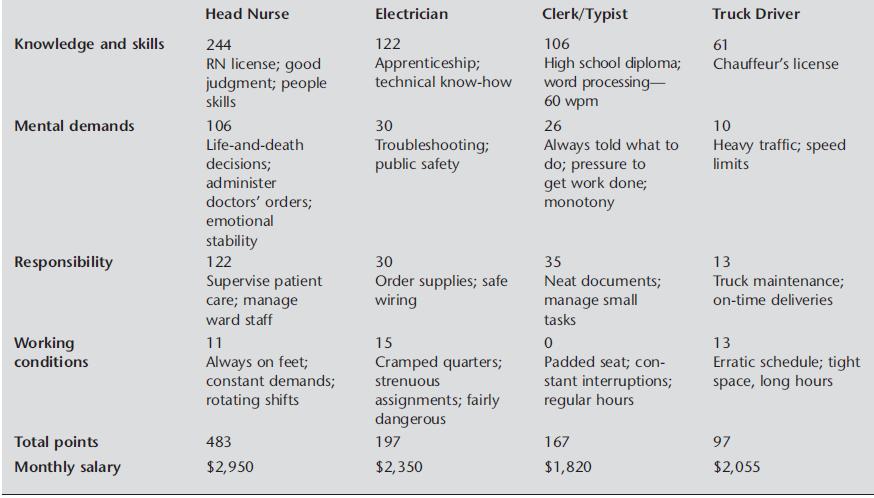Twin Oaks Hospital is a privately owned facility that serves Lexington, Colorado (population approximately 250,000). The 100-bed
Question:
Twin Oaks Hospital is a privately owned facility that serves Lexington, Colorado (population approximately 250,000). The 100-bed hospital has a staff of 350 employees, including over 200 nurses and 40 clerical and secretarial employees (an almost exclusively female group). In the last month, discontent concerning pay levels has been mounting among the hospital's nurses and secretarial-clerical employees. Discontent was spurred by recent developments at the Lexington Memorial Hospital, a public facility. There, the hospital administration agreed to demands by nurses and secretarial-clerical workers for a 5 percent pay increase. The administration further agreed to launch a job evaluation program that would evaluate the nursing and secretarial-clerical jobs on the basis of comparable worth.
The administrators pledged that the study's findings would be used as the basis for any further pay adjustments. The administration's moves came after demonstrations by nurses and clerical- secretarial workers and by a clear threat of unionization by the Union of American Nurses and the United Office Workers. Union organizers had held discussions with the nurses and office employees and had circulated the results of a comparable worth study (shown in Exhibit 10-1A) to illustrate the extent of pay inequities.
David Hardy, director of personnel at Twin Oaks, was acutely aware of the troubles brewing at his hospital. He knew that union organizers were meeting with employees and distributing the study flier. Overall, Twin Oaks' pay levels for its nurses and office staff were very similar to the levels at Lexington Memorial before the 5 percent increase.
However, the levels were not competitive with compensation available in Denver, which is located about 100 miles north of Lexington. In the last week, Hardy had met with representatives of the two employee groups at their request. There, the spokeswomen made three requests: an immediate 5 percent pay increase, the establishment of a job evaluation program based on the concept of comparable worth, and a pledge to base wage adjustments on the findings of the study.
Hardy informed James Bledsoe, the hospital director, of the employees' requests: Bledsoe asked for a recommendation for action within three days. Before developing an action plan Hardy met with his two top aides (Janet Sawyer and Charles Cooper) for an initial, informal discussion of the situation. In Hardy's view, the key question focused on whether to evaluate the jobs on the basis of comparable worth. "I favor launching the job evaluation program," said Janet Sawyer. "Nationwide, there is a disturbingly large gap between the pay levels of predominantly male and female jobs. Consider that there's no difference in the median education levels of men and women- about 12.6 years. Yet with the same median amount of education, women on the average earn 40.8 percent of a man's median pay. If we take a close look at our compensation levels across jobs from the perspective of comparable worth, we'll probably find some pretty disturbing gaps of our own.
Questions
1. In your view, is comparable worth a legitimate strategy for determining job compensation?
2. As the director of Twin Oaks’ HR department, what recommendations would you make to James Bledsoe?
3. From an HRM perspective, what are the challenges of implementing comparable worth?
Step by Step Answer:






